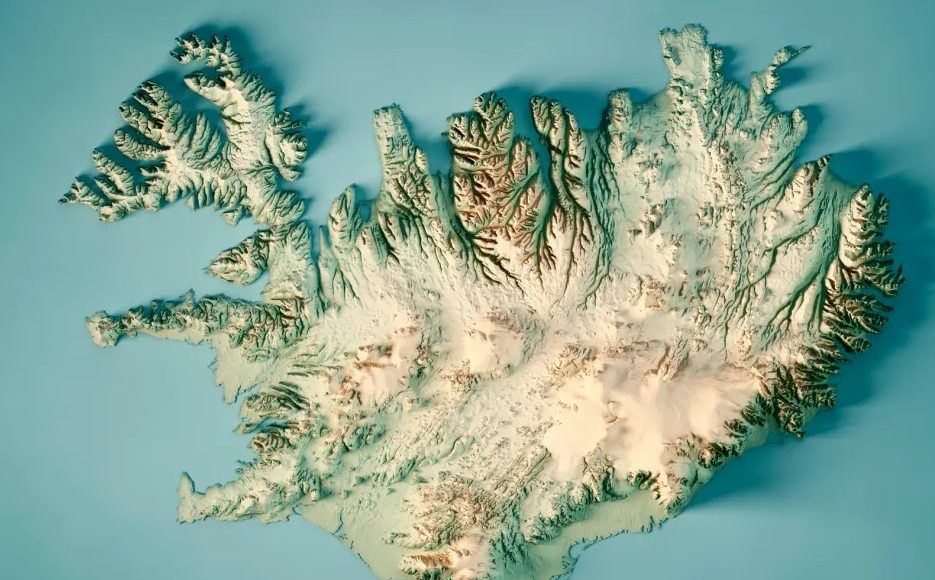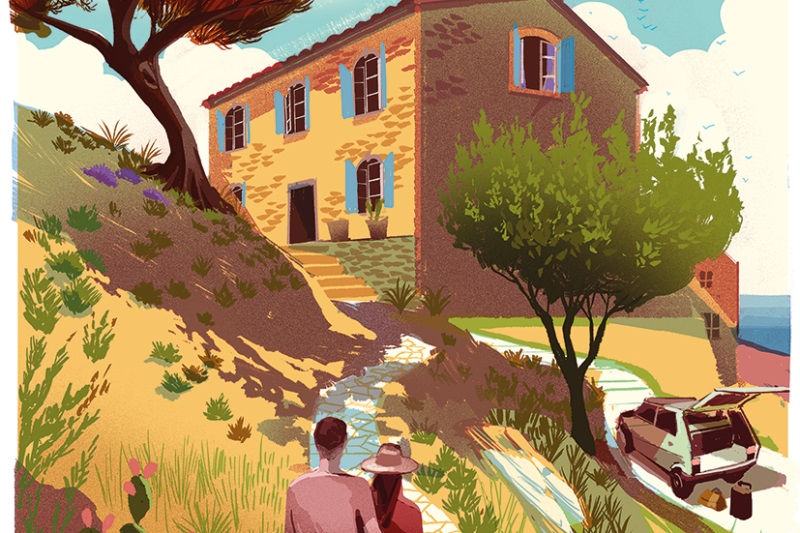No-one seems to like tourists any more. Last week Venice introduced its $5 entry charge — which merely buys you the right to go into the city and be ripped off by cafés and restaurants. On Tenerife, residents have been marching and daubing slogans on the walls “tourist — go home.” So much for free movement. Meanwhile, in Japan, a village near Mount Fuji is so fed up with Instagrammers that it is erecting a giant screen to hide the mountain. Happy holidays!
It was a trudge over ash and glacial gravels — which make for surprisingly easy walking
Not to worry. If you want to go somewhere where you won’t bother the locals you could always do as I did last summer and walk across Iceland. That is a 200-mile trek without a single local to offend. Once past the grockles luxuriating in the rainbow spray created by the Skogarfoss waterfall, it was going to be eight days with hardly a single inhabited building. Taking the once-a-day bus from Reykjavik to Skogar, I first walked three miles down to the sea across an empty black sand beach which looked like some vast open-cast coalfield and picked up the little washed pebble which I intended to throw into the sea off the northern coast, but forgot. For the next two days there were plenty of hikers — I was on the Fimmvorduhals and Laugavegur walking trails. There is a path, easy at first, which takes you up first into misty green hills. Then the vegetation dies out and you find yourself on tongues of glaciers interspersed with crumbly rock. Ahead are a couple of reddish-black mounds — some of the newest hills on Earth. They were formed in 2010 from a vent on the side of the Eyjafjallajokull volcano. The vast ash cloud which emanated from beneath my feet did more to thwart mass tourism than the mayor of Venice could ever dream of doing: it stopped most European flights for ten days.
There were several raging rivers to cross, fed by the glaciers so they are full even in dry weather. In one of these valleys there was a sign warning people not to linger in the hollows in calm weather — that being where the poisonous volcanic air collects. It wasn’t kidding: it smelled like one of the stink bombs made from rotten eggs which used to be set off by kids at my school. Reaching one stream, which was steaming, I waited for a hiker to step off the rock which seemed to offered the one chance to cross without melting your boots. Only he wouldn’t; he was spooked. “I can’t go any further,” he said. Trouble was, nor could I until he got his butt out of the way. I found a way around him; maybe he is still there now.
There were no such problems for the rest of the walk. Once the official walking trail was over I didn’t see another human for two and a half days. Come to think of it, there was hardly a single living thing. I didn’t know it at the time but the soft bed of moss on which I pitched my tent on the first night was virtually the last vegetation for 170 miles. From there on it was a trudge over ash and glacial gravels — which make for surprisingly easy walking. Technically I was following what was marked on my map as a road — except that it had no physical manifestation other than a couple of tire tracks and a line of thin white posts. Given that the largest scale map I could find was 1:250,000, I couldn’t be confident of what would happen when I reached some of the rivers. Yet there is a remarkable series of dams in the Icelandic highlands, built to hold back the snowmelt and preserve roads and farms in the lowland.
The first time I went to Iceland the car rental contract gave away the climate: the insurance policy has a clause exempting the doors being blown off by the wind. This time it was mostly calm. There was also twenty-four hour daylight — though between the odd sunny spell it could be incredibly gloomy. But on the morning of day eight I awoke to a thick mist, which wouldn’t have been a problem had my compass not become demagnetized after being kept in the same pocket as my phone. After a couple of hours plodding around in circles there was finally a glint of sun — just enough to reorientate myself and find the way to the final ridge which would take me down off the bare highlands into an emerald valley of farmsteads and on to Akureyri — Iceland’s second city, set on a lovely, sheltered fjord on the north coast. I descended on my hotel buffet like ten thousand locusts.
To be second city of Iceland is not saying a lot: it has a population of around 25,000. Or at least it does when there is not a cruise ship at dock to disgorge its herds of lard-bucket passengers to waddle around the knitwear shops and eat hamburgers at $25 a time. I’m not one of them, I wanted to say to the locals; I walked here. Though I suspect if I had done the answer would have been a bewildered “why?”
This article was originally published on The Spectator’s UK website.


























Leave a Reply